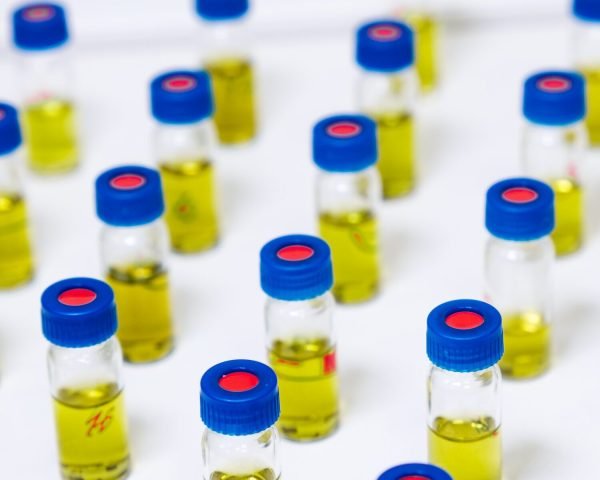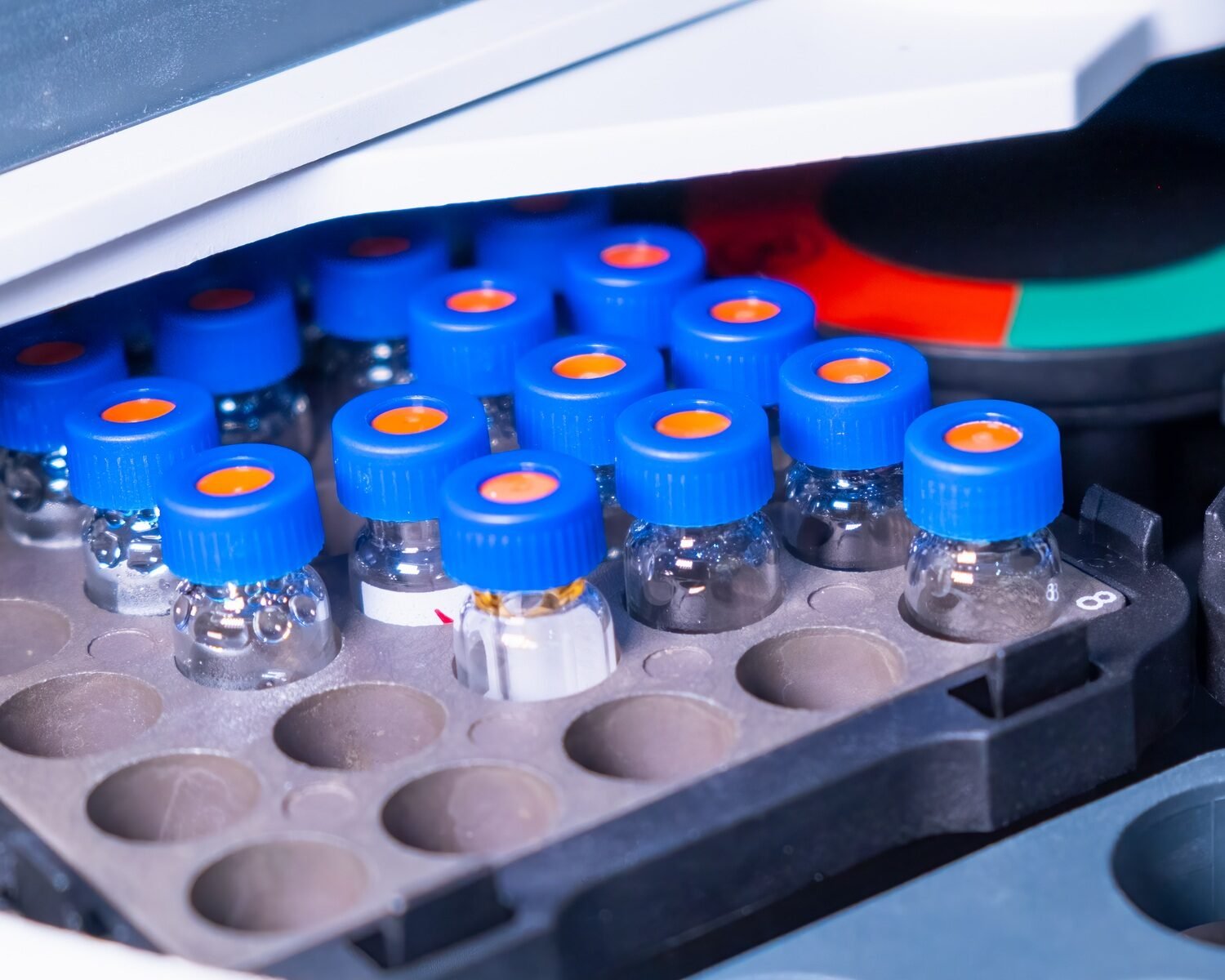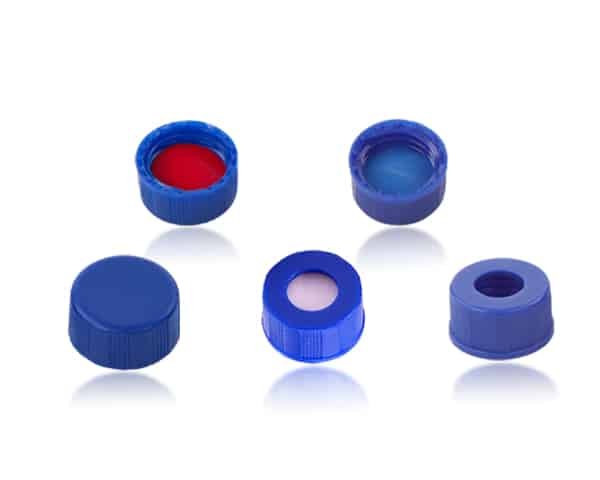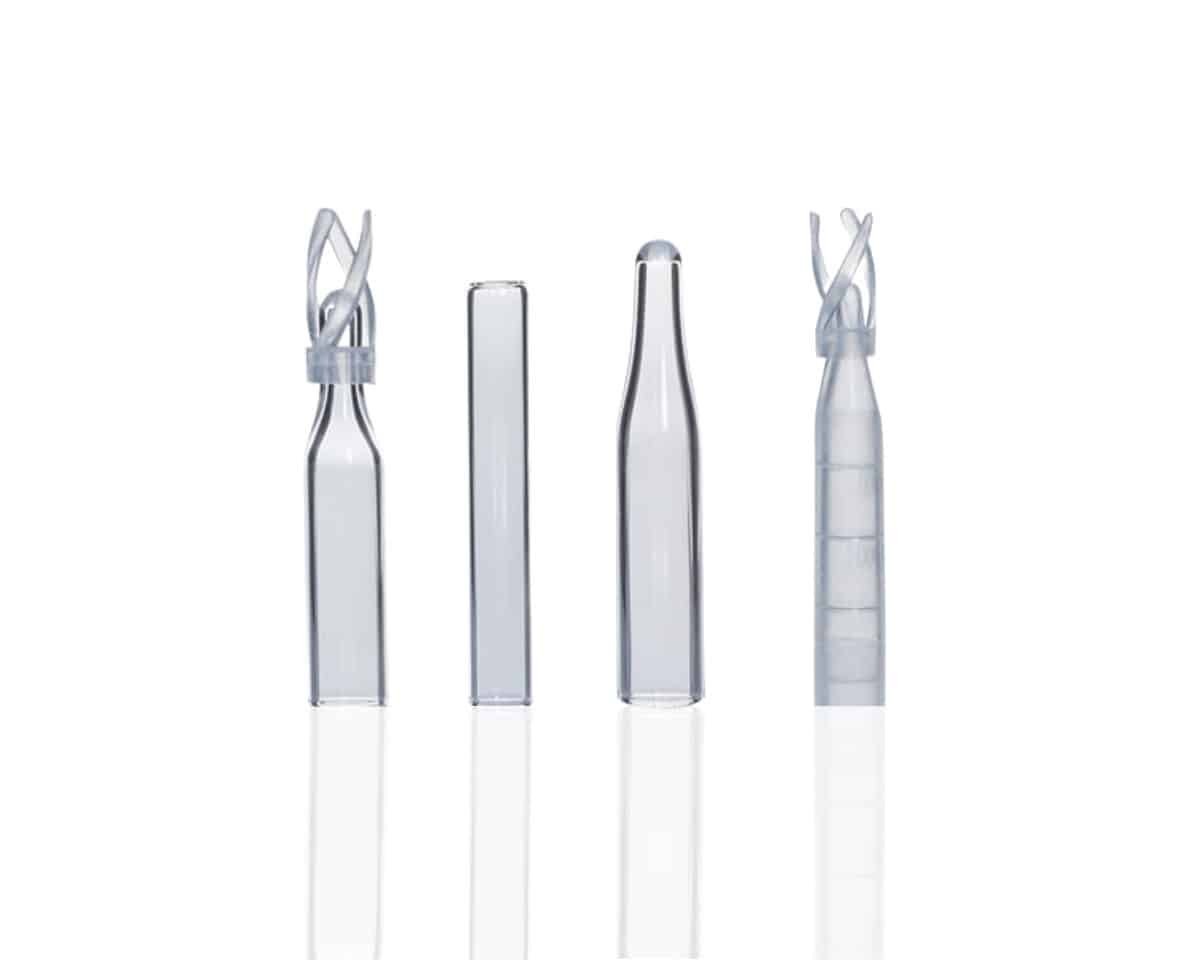Introduction
In high-throughput screening (HTS) environments, where hundreds or even thousands of HPLC samples are analyzed daily, vial selection and management play a crucial role in ensuring efficiency, accuracy, and reliability. The right vials can reduce sample loss, prevent contamination, and enhance the performance of automated injection systems. Without proper vial optimization, labs may face issues such as sample evaporation, carryover, and inconsistent injection volumes, leading to unreliable data and increased operational costs.
So, how do you optimize HPLC vials for high-throughput workflows? In this guide, we’ll cover the essential factors that make a vial suitable for HTS, explore the importance of automation-friendly vials, and discuss best practices for vial handling, storage, and labeling.
Whether you’re running drug discovery assays, food safety tests, or environmental analyses, these strategies will help maximize efficiency and maintain data integrity.
What Makes a Vial Suitable for High-Throughput Screening?
Choosing the right vial for HTS involves more than just selecting a standard autosampler-compatible container. The vial must meet specific criteria to ensure consistent results, prevent errors, and maximize throughput.
Key Factors to Consider
- Vial Size and Volume Capacity
- Standard 2 mL vials are commonly used in HPLC and fit most autosamplers.
- Low-volume vials (≤1.5 mL) are useful for conserving sample material.
- Larger-volume vials (≥4 mL) are sometimes necessary for extended analysis or multiple injections.
- Material Selection: Glass vs. Plastic
- Glass vials are chemically inert and prevent sample adsorption, making them ideal for organic solvents and volatile compounds.
- Plastic vials (polypropylene or polymethylpentene) are shatter-resistant and lightweight, suitable for aqueous or biological samples.
- Compatibility with Autosamplers
- Ensure the vial dimensions match the autosampler tray to avoid misalignment.
- Choose vials with flat bottoms for secure positioning in robotic systems.
- Headspace and Evaporation Control
- Minimizing headspace reduces sample evaporation, especially in volatile solvents.
- Use crimp-sealed vials or PTFE-lined septa to prevent sample loss.
Why It Matters
Selecting the wrong vial can lead to misaligned autosampler needles, sample evaporation, or contaminated results. High-throughput labs must standardize vial selection to streamline sample processing and ensure reliable performance.
What vial material does your lab use most often? Have you experienced compatibility issues with autosamplers?
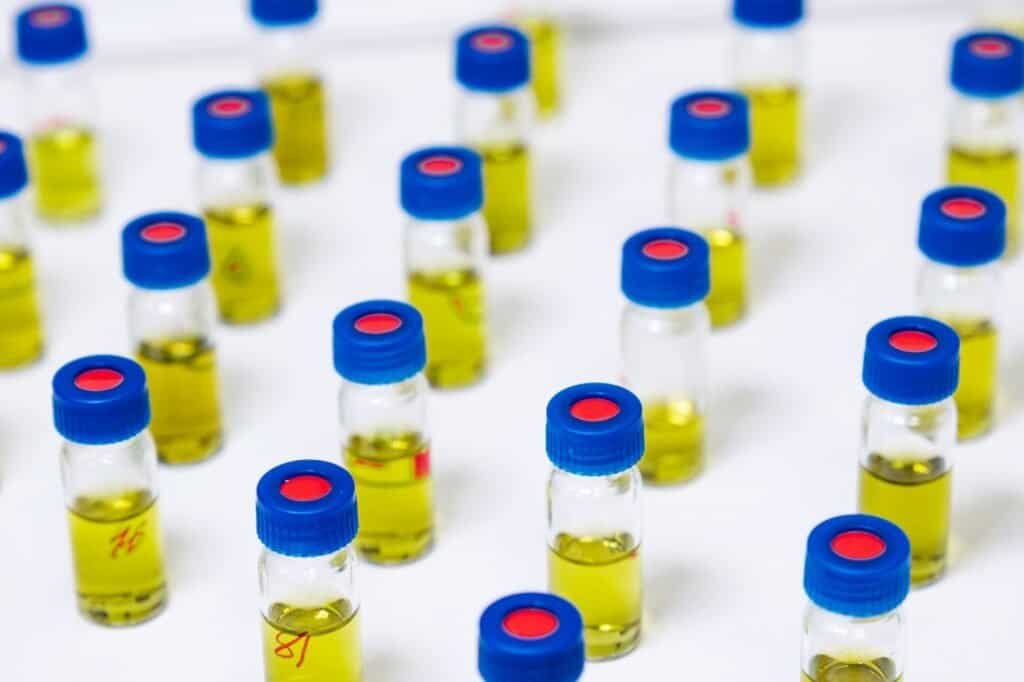
Automation-Friendly Vials: Key Features to Look For
In HTS labs, automation reduces manual handling errors, increases sample throughput, and improves data consistency. Vials designed for robotic systems must meet specific automation-friendly criteria.
Key Features of Automation-Compatible Vials
- Uniform Dimensions and Shape
- Robotic arms and injection systems require consistent vial dimensions to ensure precise sample pickup.
- Choose vials with precision-molded dimensions for flawless automation.
- Pre-Capped or Pre-Sealed Vials
- Screw caps with pre-inserted septa eliminate the need for manual capping.
- Crimp caps ensure airtight sealing but require an automated crimper for efficiency.
- Color-Coded or Barcoded Vials
- Barcoding enables automated sample tracking and minimizes mix-ups.
- Color-coded caps help differentiate sample types quickly.
- Vial Racks and Trays for HTS Workflows
- Use customized vial racks designed for autosamplers to prevent misalignment.
- Ensure trays hold vials securely to avoid mispositioning during robotic handling.
Why It Matters
Automation-compatible vials reduce manual errors, improve sample tracking, and optimize injection precision, leading to higher reproducibility and faster analysis times.
Is your lab currently using automation-friendly vials? What challenges have you faced with automated sample handling?
Minimizing Waste and Error with Proper Vial Management
High-throughput environments generate large volumes of samples, requiring an organized vial management system to prevent waste, mislabeling, and cross-contamination.
Best Practices for Vial Management
- Efficient Storage Solutions
- Use modular storage racks to organize vials by sample type and test batch.
- Store vials in temperature-controlled areas to prevent degradation.
- Labeling and Sample Tracking
- Implement barcode systems to automate sample tracking.
- Use pre-printed labels with solvent-resistant ink to avoid smudging.
- Reducing Sample Waste
- Use low-volume vials to minimize excess sample use.
- Optimize sample transfer methods to reduce loss during pipetting.
- Routine Quality Checks
- Regularly inspect vials for cracks, seal integrity, and contamination.
- Discard expired or damaged vials to prevent analytical errors.
Why It Matters
A well-organized vial management system ensures sample integrity, reduces processing errors, and improves workflow efficiency, saving both time and resources.
What strategies does your lab use to minimize vial waste and mislabeling?

The Role of Inserts and Vial Caps in High-Throughput Workflows
To maximize sample efficiency in small-volume analyses, vial inserts and caps play a crucial role in maintaining sample stability and preventing contamination.
Using Inserts for Small Sample Volumes
- Glass or plastic inserts help concentrate small samples for efficient injection.
- Conical-bottom inserts allow maximum sample recovery with minimal residue.
Choosing the Right Vial Caps and Septa
- PTFE-lined septa provide excellent chemical resistance for volatile samples.
- Pre-slit septa allow smooth autosampler needle penetration, minimizing wear.
- Magnetic caps are required for certain robotic systems to ensure proper gripping.
Why It Matters
Proper selection of inserts and vial caps enhances sample injection accuracy, prevents needle damage, and minimizes sample waste.
Do you use vial inserts in your lab? Have you found a specific cap-septa combination that works best for automation?
Tips for Handling and Storing Vials in a High-Throughput Lab Environmen
With the high volume of samples processed in HTS workflows, maintaining proper vial handling and storage protocols is essential.
Best Practices for Handling and Storage
- Minimize Exposure to Air and Light
- Store sensitive samples in amber vials to prevent light degradation.
- Keep vials sealed when not in use to avoid contamination.
- Use Temperature-Controlled Storage
- Store vials in refrigerators or freezers for temperature-sensitive samples.
- Ensure stability for long-term storage with airtight seals.
- Batch Processing for Efficiency
- Prepare vials in pre-sorted trays to streamline high-volume testing.
- Label vials clearly to prevent misidentification in large sample sets.
Why It Matters
Proper handling prevents sample degradation, extends vial lifespan, and ensures that high-throughput workflows remain efficient and error-free.
What storage methods have helped you maintain sample integrity in your lab?
Conclusion
Optimizing HPLC vials for high-throughput screening requires careful selection of size, material, and automation compatibility. Using pre-capped vials, barcode systems, vial inserts, and optimized storage solutions will improve sample handling, minimize waste, and ensure reliable, high-speed analysis. By following these best practices, labs can enhance workflow efficiency and maintain the accuracy of high-throughput analytical testing.
Mastelf, with over 13 years of experience in chromatography vials since established in 2011, we can help you find the exact vials you need for your applications.
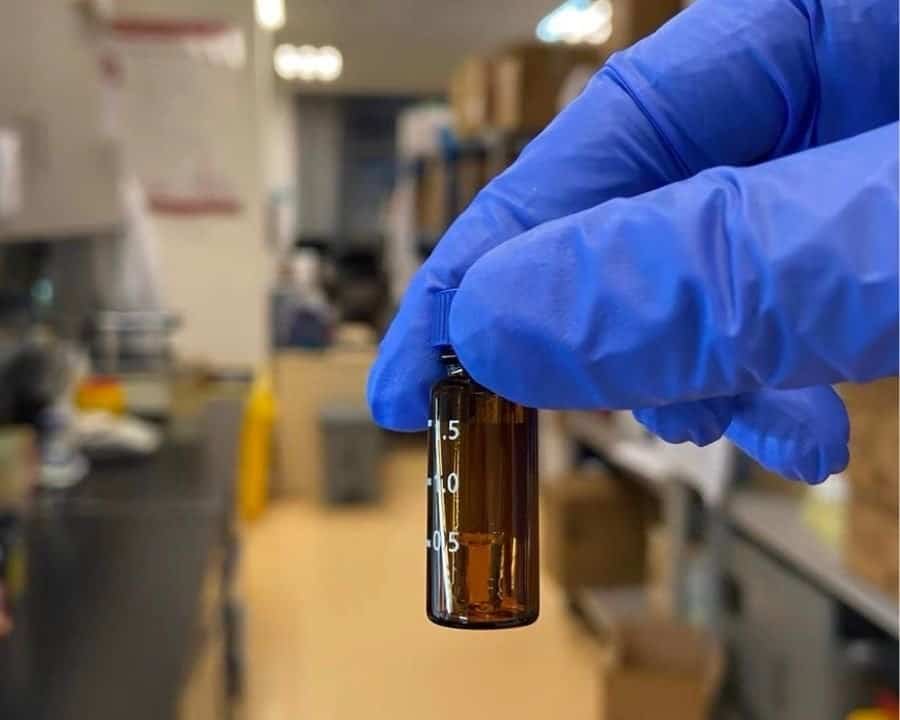
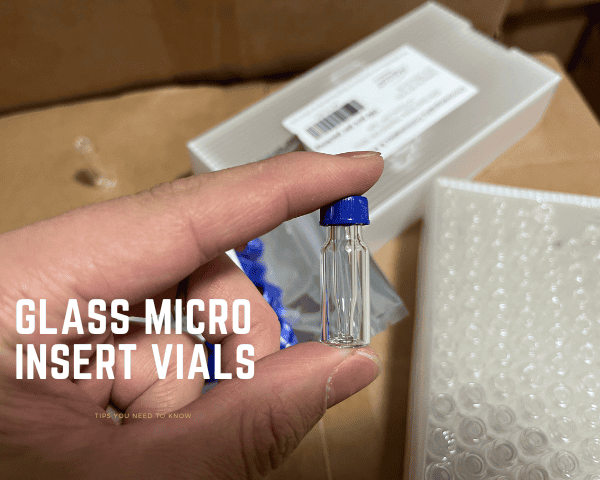
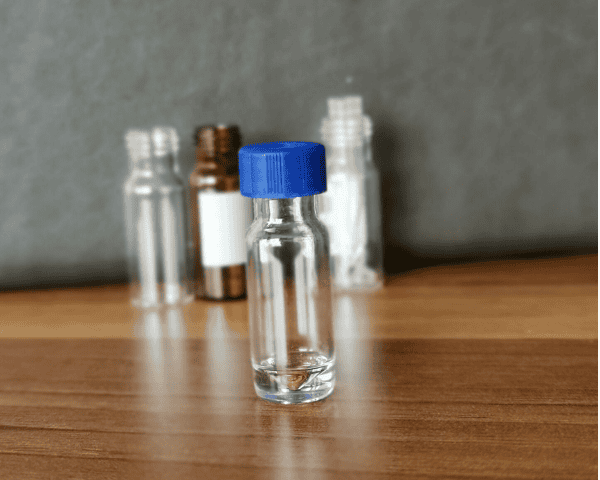
Our expertise ensures that you get reliable and precise products tailored to your specific requirements. Whether you’re in pharmaceuticals, research, or any other industry relying on HPLC, we understand your needs and are here to support you in making the right purchase.
Reach out to Mastelf, and let us assist you in procuring the perfect vials for your work.
FAQ
- What is the best vial size for high-throughput screening?
- 2 mL vials are the most common, but low-volume vials work well for minimizing waste.
- Are glass or plastic vials better for HTS?
- Glass vials offer superior chemical resistance, while plastic vials are preferred for shatterproof handling.
- How do I prevent contamination in high-throughput workflows?
- Use pre-sealed vials, PTFE-lined septa, and automated sample tracking.
- How often should vials be replaced in HTS setups?
- Regularly inspect for cracks, leaks, and degradation to maintain data integrity.
- What vial cap is best for automation?
- Crimp caps or screw caps with pre-inserted septa ensure airtight sealing.

